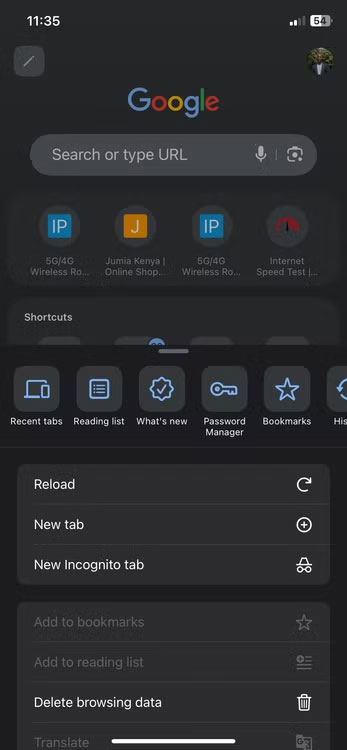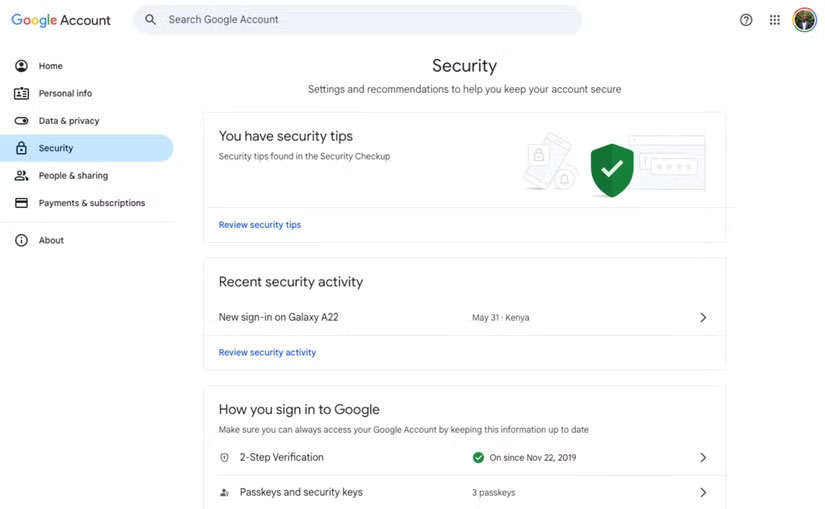Tips for using Google Password Manager safely
Many people have relied on Google Password Manager for years to keep their digital lives organized, but convenience can sometimes come at the expense of security. So if you're using Google Password Manager, use these tips to keep your passwords safe and out of reach of the bad guys.
7. Use a strong Google account password
If you sync Google Password Manager (GPM) with your Google account, your account password acts as the key to access your stored passwords. Therefore, GPM is only as secure as the password protecting your Google account. For this reason, it is important to use strong and unique passwords .
There are many ways to make your password more secure, but you can use a passphrase if you want it to be easier to remember.
6. Turn on two-factor authentication (2FA) for your Google account

It's no secret that even the strongest passwords can be compromised. That's why enabling two-factor authentication (2FA) is a must for any online account, not just your Google account. 2FA adds an extra layer of protection, requiring you to provide both your password and a second verification step. The second verification step can be a code sent to your phone via SMS or generated by an authenticator app.
This extra layer ensures that even if your password falls into the wrong hands, your account won't be compromised without the second factor. Google offers three 2FA options, including text messages, authenticator apps, and even physical security keys. You can use any of these three options, but for optimal security, you should avoid SMS verification because it's vulnerable to SIM swapping and other attacks.
5. Turn on device encryption in Google Password Manager
Another lesser-known way to increase the security of your saved logins is on-device encryption. When on-device encryption is enabled, your logins are encrypted and decrypted only on your device. This adds an extra layer of protection to your saved passwords, ensuring that no one, not even Google, can access them.
The downside is that since you hold the keys to decrypt your passwords, you can't recover them unless you have access to your device or have set up recovery options. But that's the whole point. If you're serious about password security, enabling on-device encryption in Google Password Manager is a logical next step.



4. Secure your device with biometrics, PIN, or password
Even with a secure Google account, your device needs to be protected, as everything will be compromised if someone can easily unlock it. When using Google Password Manager, it is essential to secure your device with a PIN, password, or strong biometric authentication (like a fingerprint or facial recognition), as these act as a gateway to your passwords.
For optimal security, avoid leaving your device unprotected or using a weak screen lock mechanism that can be easily bypassed. Facial recognition can be used for convenience, but a PIN should be used as a backup. You can also use biometric authentication and have a PIN as a backup in case the first method fails due to physical damage or any other reason.
3. Only log in on trusted devices
Since your Google account gives you access to all your saved logins, only sign in on trusted devices. Only sign in to your account on devices that are shared, public, or borrowed, as anyone else using them could access your saved logins.
However, if you must use someone else's device, use Chrome's Incognito or Guest Mode and always sign out when you're done. That way, you can be sure the device owner won't be able to access your saved passwords and any other personal data in your Google account after you're done.
2. Track Google account activity
You should also monitor your account activity to spot any suspicious activity early, such as if someone else has access to your password. Thankfully, Google lets you do this directly in your account management. However, the best option is to enable notifications so you can receive these security alerts in real time on your device.
Additionally, you can check the same information in your Google account by selecting the account profile icon and navigating to Manage your account > Security > Recent security activity .

1. Update your device regularly
Software updates are an important part of keeping your device secure. Even if you follow all of the recommended steps above, vulnerabilities in your operating system or applications can still leave your saved credentials vulnerable. Regular updates will patch these vulnerabilities before hackers can exploit them.
That's why it's a good idea to install updates as soon as they're available. It's also important to keep your apps up to date, and most importantly, your Chrome browser, since GPM integrates directly with it.
You should read it
- This fake password manager reminds you to be careful where you download from
- Is the password manager on the browser secure enough?
- 5 best password manager extensions for Firefox
- Which browser has the best password manager?
- 8 best Linux password managers
- 8 Reasons Password Managers Aren't As Secure As You Think
 Threads article spoiler installation guide
Threads article spoiler installation guide How to install and use IMOU on your computer simply
How to install and use IMOU on your computer simply Why do more people still not use Apple Mail, even though it has been improved?
Why do more people still not use Apple Mail, even though it has been improved? How to download Spotify music remotely to another device
How to download Spotify music remotely to another device 7 Reasons Gmail is Better than Outlook
7 Reasons Gmail is Better than Outlook How to post Instagram contributors
How to post Instagram contributors